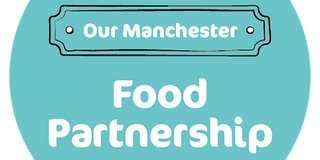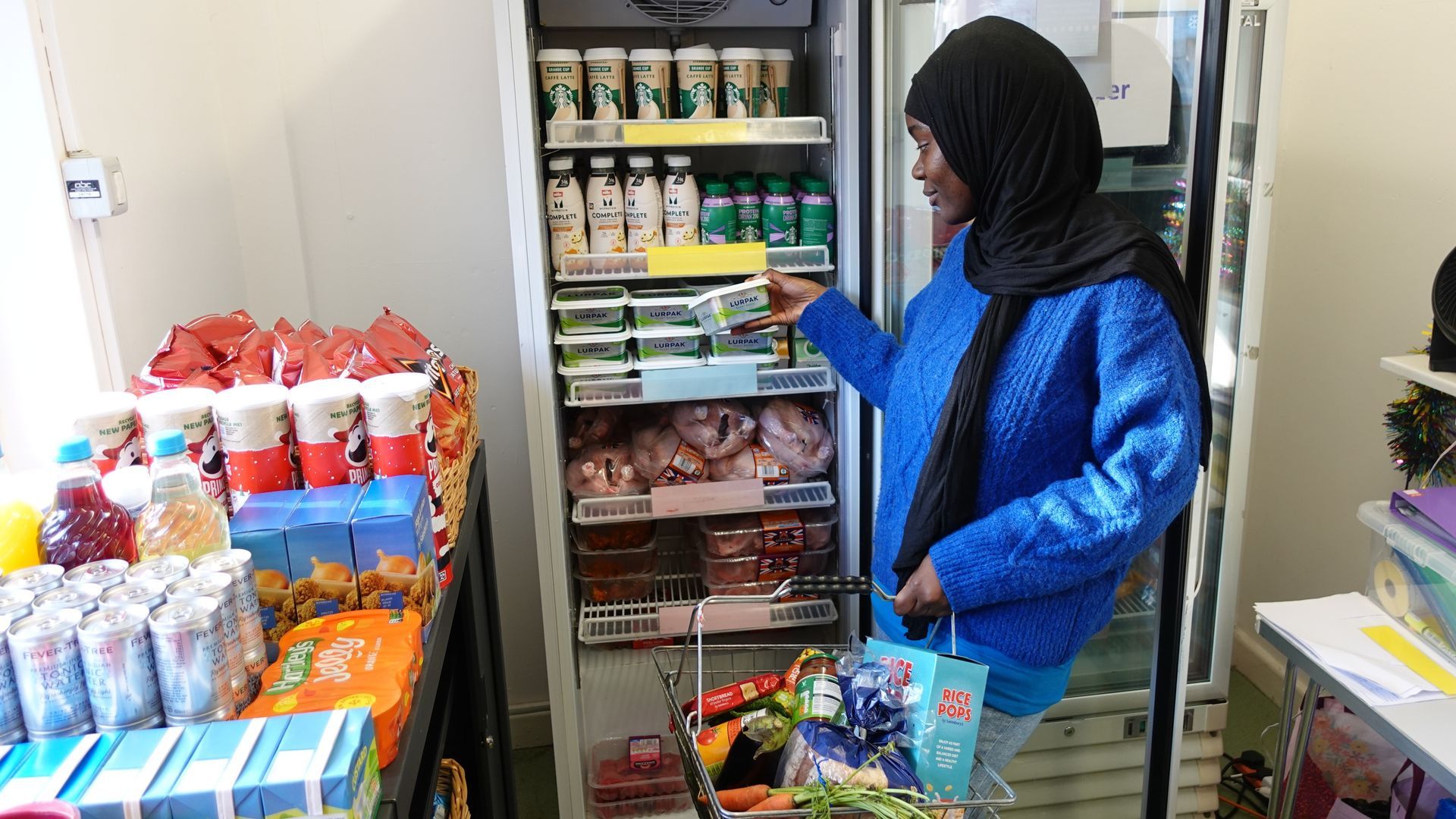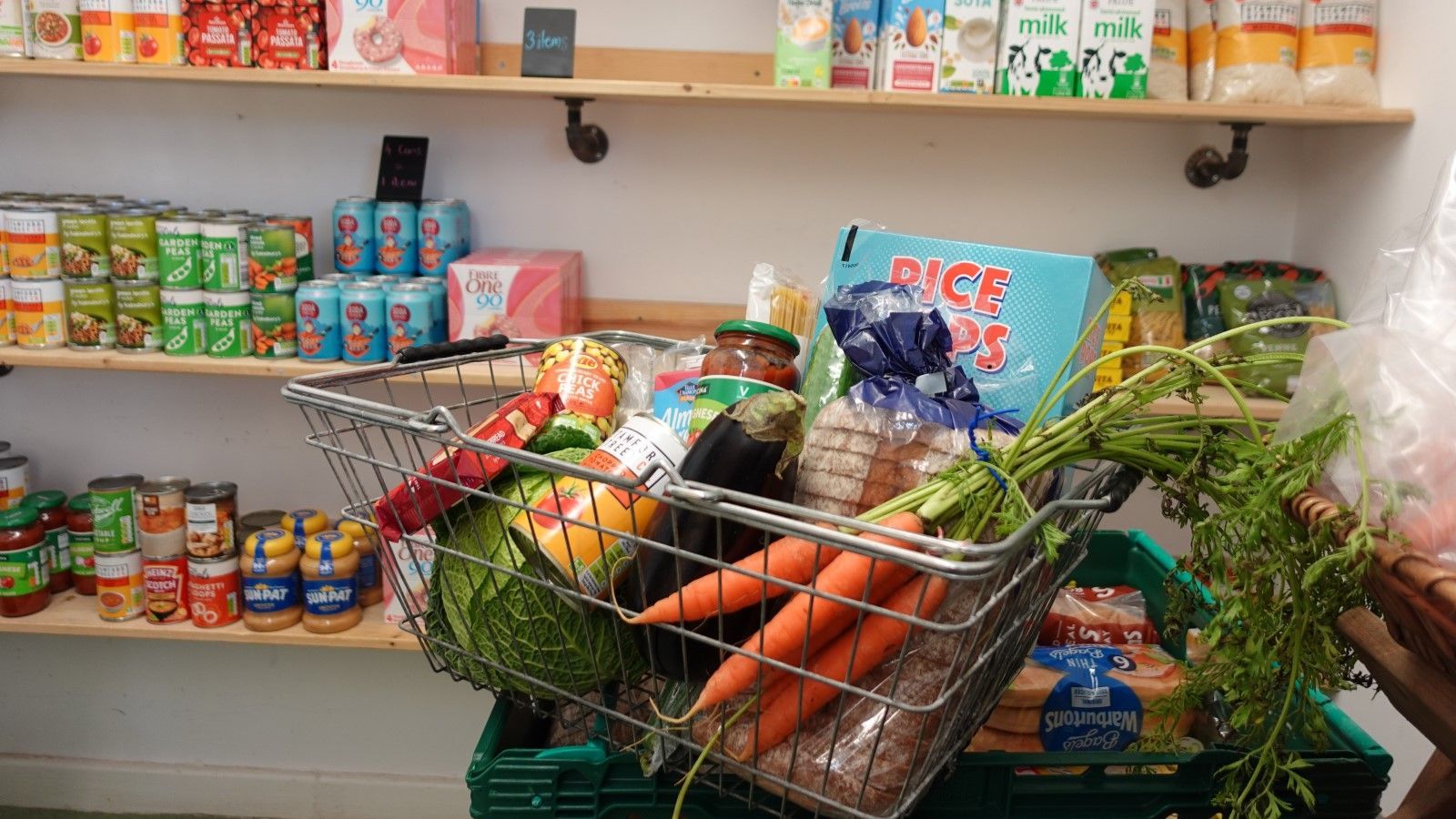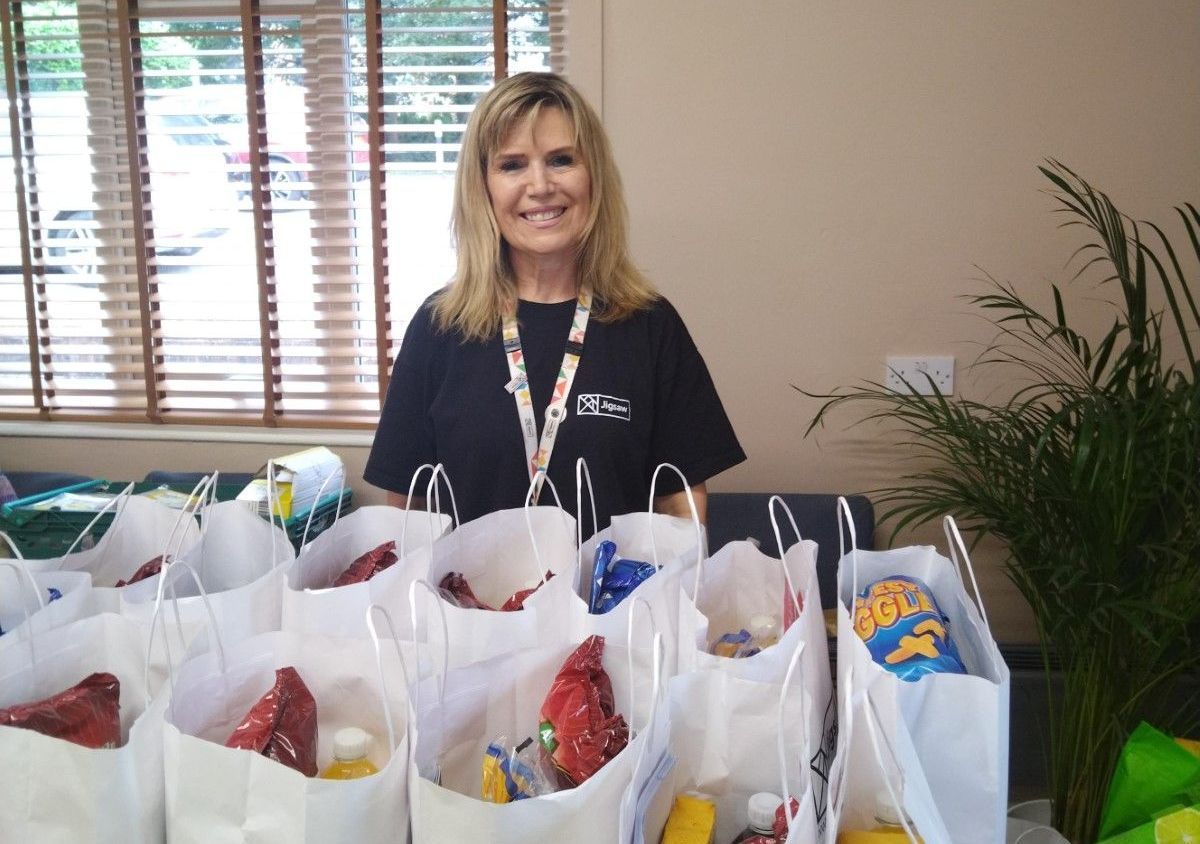Food Aid for Thought
Good food is a fundamental building block of health. Everyone should be able to access and afford enough nutritious food to lead a healthy life.
"One way to deprive people of the opportunity to lead dignified lives is to take away the means to meet their material needs” Sir Michael Marmot
Yet, food insecurity, the ability to consistently access sufficient, safe and nutritious food to maintain a healthy and active life has been increasing in the UK for a number of years. Food insecurity in the UK is a complex systemic problem influenced by the interplay of economic, social and environmental factors. For individuals and families, this is shaped by a variety of factors, including changes to the benefits system, low wages, temporary employment and the rising cost of living. This can be compounded by structural discrimination and racism. Environmental factors include climate change and extreme weather events that threaten agriculture production, while Brexit and global supply chain disruptions have highlighted the fragility of the UK food system.
Addressing food insecurity requires more than short-term interventions like food aid programmes. Instead, it requires a systems approach rooted in an anti-poverty and sustainable food approaches, both locally and nationally.
There has been great work in Manchester to prevent and mitigate food insecurity including responses to the cost-of-living crisis and the COVID-19 pandemic. This summary builds upon this great work, bringing together the insights, commitment and passion of stakeholders from all sectors to think about what would make Manchester a food secure place that ends the need for food aid.
Definition of Food Poverty
There is no widely accepted definition of ‘food poverty’. Definitions include:
- Experiencing food poverty or ‘household food insecurity’ if they cannot (or are uncertain about whether they can) acquire an adequate quality or sufficient quantity of food in socially acceptable ways”.
- The lack of reliable access to sufficient quantities of affordable, nutritious food).
- ‘A lack of regular access to enough safe and nutritious food for normal growth and development and an active and healthy life’.
The Food Foundation, Food Insecurity Tracker asks three questions to assess food insecurity. If a respondent answers yes to any of these three questions, they are classified as food insecure: In the last month, have you/anyone else in your household:
- Had smaller meals than usual or skipped meals because you couldn’t afford or get access to food?
- Ever been hungry but not eaten because you couldn’t afford or get access to food
- Not eaten for a whole day because you couldn’t afford or get access to food?
Rising food insecurity in the UK
A summary:
The Food Foundation’s Food Insecurity Tracker recorded 13.6% of households experienced food insecurity in June 2024.
This is significantly up from 2022/23 figures of 7.2 million people, or 11% of the UK population, in households experiencing food poverty, including 17% of children.
The Department for Work and Pensions’ (DWP) Households Below Average Income survey, in 2022/23, 7.2 million people (11%) in the UK were in food insecure households, an increase of 2.5 million people since 2021/22.
Between 2021/22 and 2022/23, the percentage of children in food insecure households rose from 12% to 17%, the percentage of working-age adults rose from 7% to 11%.
In 2022/23, the Trussell Trust, a charity and network of foodbanks, supplied the highest recorded number of three-day emergency food parcels.
Not everyone is affected equally
- Food insecurity disproportionately affects some groups of people including Black, Asian and minority ethnic communities, those on low incomes, and our residents with disabilities and long-term health conditions.
- People in a household from a Black/African/Caribbean/Black British ethnic group were most likely to experience food insecurity (21%), followed by people in a household where the household reference person was from a Mixed or multiple ethnic groups (19%).
- 18% of people in families where someone is disabled were in a food insecure household, compared with 7% of people in families where nobody was disabled.
- People living with mental health conditions were over twice as likely to be living in food insecure households (28.0%) compared to those without mental health conditions (10.7%)
- Adults with severe mental illness are nearly three times more likely to experience food insecurity compared to the general population.
- 17% of people in families where nobody worked were in food insecure households in 2022/23, compared with 9% of people in families where at least one adult worked.
- The Trussell Trust commissioned a survey in May to August 2022 about food insecurity concluded some groups had higher rates of food insecurity than others, including households with children (especially single parent households), renters, LGBTQ+ people, disabled people, people from a minority ethnic group and unpaid carers.
Food insecurity, poverty and shame: an intersectional understanding
The relationship between stigma, poverty, food insecurity is increasingly understood. This comes into sharp focus when we consider the intersectional nature of people's identities and how multiple forms of disadvantage operate to compound inequalities to resources – money, networks, services and personal skills etc. In turn, this generates a sense of shame and stigma which further embeds poverty and lack of access to opportunities to live a decent life according to modern standards and expectations, moving people further away from long-term solutions.
The Centre for Intersectional Justice (2022) summarise this as:
'The concept of intersectionality describes the ways in which systems of inequality based on gender, race, ethnicity, sexual orientation, gender identity, disability, class and other forms of discrimination “intersect” to create unique dynamics and effects.'
Impact of food insecurity
Food insecurity goes just beyond hunger but has an enduring impact on diet, general health and mental health.
Diet:
Diet-related ill health is a leading cause of preventable illness in the UK, and a significant driver of health inequalities. Healthy, nutritious food is now almost three times more expensive per calorie than unhealthy products and between 2021 and 2022, healthier foods saw greater price inflation, increasing in price by 5% on average, compared with 2.5% increases seen for the least healthy foods.
Therefore, households experiencing food insecurity are more likely to cut back on buying healthier foods, including fruit, vegetables and fish, resulting in poorer quality diets that increase risk of diet-related ill health.
Also, there is very little research and evidence into the types of food available through food-aid, its nutritional value and the long-term impact on health, health equity and health inequalities.
Mental Health:
In recent years, food security and mental health have both substantially deteriorated in the UK contributing to reductions in health and health inequalities.
The relationship between food insecurity and mental health is deeply intertwined. Individuals with mental health conditions face a heightened risk of falling into food insecurity, while those experiencing food insecurity are more prone to poor mental health.
Food insecurity can inflict significant stress, anxiety, and depression on individuals and families. Constant worry over not having enough food to meet basic nutritional needs can create an overwhelming sense of uncertainty and fear. Also, there is clear evidence of the relationship between diet and nutrition and mood and mental well-being.
Finally, mental health issues can also significantly contribute to food insecurity by reducing work capacity and creating financial instability.
Food Aid
The DWP published statistics on food bank use for the first time in March 2023. In 2022/23, 2.3 million people in the UK lived in households which had used a food bank in the previous 12 months, a rate of 3%. This includes 6% of children, 3% of working-age adults, and around 1% of pensioners. In 2023/24 the Trussell Trust supplied 3.12 million emergency food parcels, the highest number of parcels distributed by the network in a year.
There is no database of all UK food banks, but data from the Trussell Trust and the Independent Food Aid Network (IFAN) can help us estimate how many there are in the UK. The Trussell Trust has the UK’s largest network of food banks. It includes over 1,699 food bank centres in all four nations of the UK as of 2023/24. IFAN is the UK network for independent (non-Trussell Trust) food aid providers. There are at least 1,172 independent food banks in the UK today. Added to the Trussell Trust’s 1,646 this makes over 2,871 food banks in total, and this is widely accepted as a significant underestimation.
The food aid sector is under considerable strain, with much of its food coming from unpredictable waste/surplus food. Furthermore, their food supply is decreasing due to the rising cost of food and essentials, and demand is increasing faster than ever before. Current food aid models are also frequently reliant on waste/surplus food from an unsustainable food system, which is also facing significant challenges, including unsustainable and unhealthy food and food production methods, and a move away from local food systems.
Finally, food-aid providers commonly experience challenges related to funding, rising demand, increasing complexity of issues and providing culturally appropriate food. Too often food-aid is cited as a solution to much more complex issues with many groups and organisations feeling “stuck” in providing charitable food aid and find it challenging to stop or transition towards a more sustainable approach.


A Manchester Perspective
Food has a place in many policy and strategic areas across Greater Manchester, and this contributes to a lack of clarity around food security. This section doesn’t attempt to summarise every policy area but gives a pen picture of the current drivers.
Manchester Food Board (MFB)
MFB is part of the Our Manchester approach and is commissioned by Manchester Public Health service. Board membership draws from the statutory, housing, VCSFE and private sectors.
The MFB Board and partners continue to develop and evolve a food strategy for Manchester that:
- Prevents malnutrition and hunger in vulnerable groups
- Makes diets more sustainable
- Builds a shared, sustainable food culture across society, and engages our ethnically diverse population
- Increases local food production
- Creates short, transparent supply chains
- Builds a more inclusive food and beverage economy, and creates a more skilled and efficient workforce
- Reduces the carbon impact of the food system by elimination of avoidable food waste, excess packaging, and ineffective use of natural resources
- Supports innovation that drives more sustainable food systems using data, research, and technology
The MFB action-plan is focused on supporting a sustainable and equitable recovery for the city to help ‘build back better’ with the following aims to:
- Secure access to sustainable, appropriate and nutritious food for all people
- Promote a vibrant food culture and help create a dynamic and robust hospitality sector
- Create more resilient supply chains
- Reduce the environmental impacts of the food system
- Facilitate collaboration, research and innovation in the food system
Our Manchester Food Partnership (OMFP)
The OMFP is a network of Manchester food-aid providers exploring ways to improve food-aid for Manchester households. It was born during the pandemic with Manchester City Council coordinating and commissioning pandemic emergency food provision. Alongside providing support for food support organisations, allocating approximately £1m in grant funding to providers as part of MCC’s cost-of-living response, providing stock and other resources for the sector, information sharing and exploring good practice, the OMFP has been exploring the viability and mechanism to transfer the management of the network to the VCSE sector.
The ambition is for a city-wide food-aid infrastructure organisation or alliance supporting the development of the sector, either as a new entity, partnership of existing providers or located within an existing infrastructure organisation.
Summary
Food insecurity is a complex problem with many interrelated causes. Creating a population in which everyone can access and afford sufficient, nutritious food will require action across multiple determinants, many of which operate at national and global levels. It will require both policy change, statutory leadership, academic further academic research and importantly community-led approaches for sustainable change and sustainable food futures.
Sign up
to our Partner’s Bulletin to keep up to date on our work, partnerships and collaborations.





